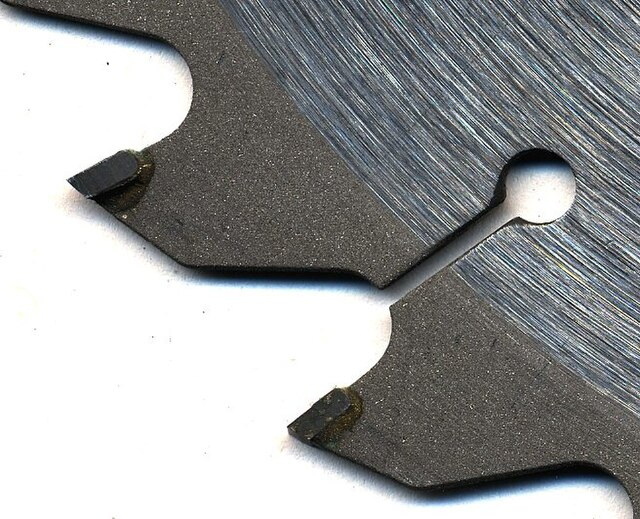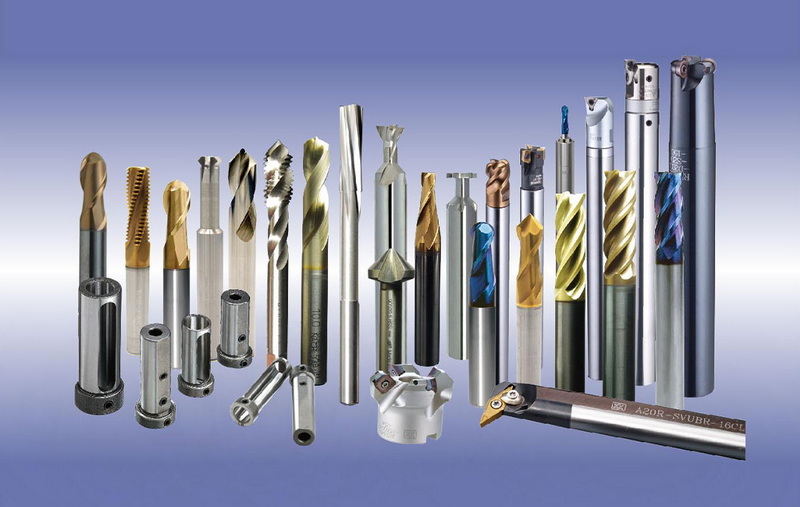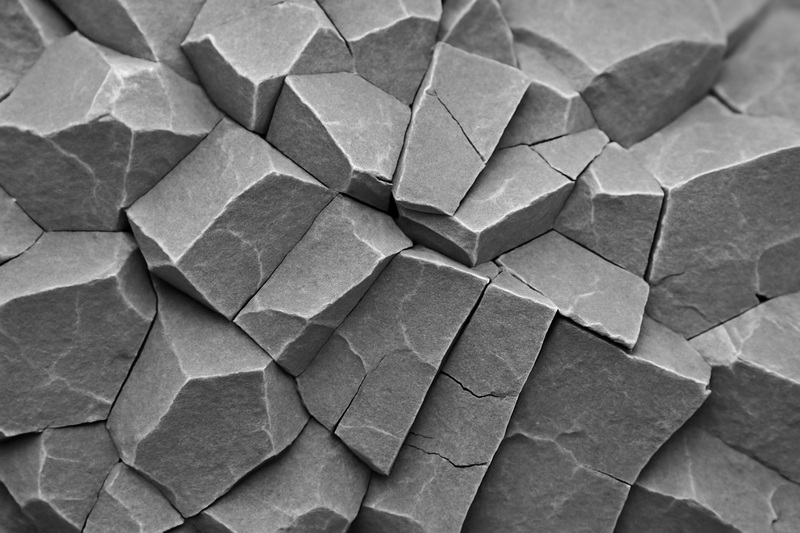Content Menu
● Understanding Tungsten Carbide: Structure and Properties
● Why Does Tungsten Carbide Shatter?
>> Key Reasons for Brittleness
● Types of Tungsten Carbide Most Likely to Shatter
>> 1. Fine-Grained Tungsten Carbide
>> 2. Low Cobalt (Binder) Content
>> 3. High Porosity or Defective Microstructure
>> 4. Improperly Sintered Tungsten Carbide
>> 5. Ultra-Hard Grades Used in Jewelry
● How Tungsten Carbide Shatters: Real-World Examples
● Factors That Increase the Likelihood of Shattering
● Applications Where Shattering is a Concern
● How to Reduce the Risk of Shattering
● Practical Implications for Everyday Use
● Additional Considerations in Tungsten Carbide Brittleness
>> Impact of Temperature Variations
>> Role of Surface Treatments
● Handling and Maintenance Tips for Tungsten Carbide Items
● Conclusion
● FAQ: Tungsten Carbide Brittleness and Shattering
>> 1. Why do tungsten carbide rings shatter instead of bend?
>> 2. Can the brittleness of tungsten carbide be reduced?
>> 3. Are all tungsten carbide tools equally prone to shattering?
>> 4. What should I do if my tungsten carbide ring breaks?
>> 5. Is shattering a safety risk or benefit in emergencies?
Tungsten carbide is renowned for its exceptional hardness and wear resistance, making it a preferred material in demanding industrial applications and even in jewelry. However, despite its toughness, tungsten carbide is also known for its brittleness, which means it can shatter under certain conditions. In this comprehensive article, we will explore the types of tungsten carbide most prone to shattering, the science behind its brittleness, the factors influencing its fracture behavior, and practical implications for users and manufacturers.

Understanding Tungsten Carbide: Structure and Properties
Tungsten carbide is a compound composed of tungsten and carbon atoms, typically produced through powder metallurgy. Its structure consists of hard tungsten carbide grains embedded in a softer metallic binder, usually cobalt. This unique microstructure is responsible for its remarkable physical properties:
- Extreme Hardness: Ranks between 9.0 and 9.5 on the Mohs scale.
- High Density: About twice as dense as steel.
- High Melting Point: Around 2,870°C.
- Young's Modulus: 530–700 GPa, indicating significant stiffness.
- Low Ductility: Does not bend or deform easily.
- High Wear Resistance: Maintains sharp edges and resists abrasion.
While these characteristics make tungsten carbide a top choice for cutting tools, drill bits, and jewelry, they also contribute to its tendency to shatter rather than deform under stress.
Why Does Tungsten Carbide Shatter?
The shattering of tungsten carbide is a direct result of its brittleness. Unlike ductile metals such as gold or steel, which can absorb energy by bending or deforming, tungsten carbide is rigid. When subjected to sharp impacts or excessive pressure, it cannot flex and instead fractures, often breaking cleanly into pieces.
Key Reasons for Brittleness
- Microstructure: Fine grains increase hardness but reduce ductility, making the material more prone to cracking.
- Low Cobalt Content: Less binder means higher hardness but lower toughness, increasing brittleness.
- Porosity: Voids or pores within the material act as stress concentrators, initiating cracks.
- Improper Sintering: Manufacturing flaws can introduce internal stresses, further reducing toughness.
Types of Tungsten Carbide Most Likely to Shatter
Not all tungsten carbide is created equal. The likelihood of shattering depends on several compositional and structural factors:
1. Fine-Grained Tungsten Carbide
- Description: Contains very small tungsten carbide grains.
- Properties: Higher hardness, lower toughness.
- Shatter Risk: More likely to crack or shatter under impact due to reduced ductility.
2. Low Cobalt (Binder) Content
- Description: Less metallic binder (cobalt) in the composite.
- Properties: Increases hardness but decreases the ability to absorb shock.
- Shatter Risk: More susceptible to brittle fracture, especially under sudden loads.
3. High Porosity or Defective Microstructure
- Description: Contains voids, pores, or inconsistent grain distribution.
- Properties: Pores act as crack initiation sites.
- Shatter Risk: Significantly increased due to stress concentration around defects.
4. Improperly Sintered Tungsten Carbide
- Description: Result of poor manufacturing control (temperature, pressure, time).
- Properties: Residual internal stresses, non-uniform grain growth.
- Shatter Risk: Prone to unpredictable fracture under stress.
5. Ultra-Hard Grades Used in Jewelry
- Description: Tungsten carbide rings and jewelry are often made with minimal binder for maximum scratch resistance.
- Properties: Extremely hard, but almost no flexibility.
- Shatter Risk: Can break or shatter if dropped onto hard surfaces or struck with force.
How Tungsten Carbide Shatters: Real-World Examples
- Jewelry: Tungsten carbide rings are famous for their scratch resistance but can shatter if dropped on tile or struck with a hammer.
- Cutting Tools: Fine-grained, low-binder carbide inserts may chip or fracture during heavy machining or if mishandled.
- Industrial Buttons: Drill bits and mining buttons with high hardness may spall or crack when encountering unexpected rock hardness or impact.
Factors That Increase the Likelihood of Shattering
Several conditions and design choices can make tungsten carbide more prone to shattering:
- Low Cobalt Content: Less binder means less ability to absorb shock.
- Fine Grain Size: Higher hardness but lower toughness.
- High Internal Stresses: From rapid cooling or improper sintering.
- Presence of Defects: Pores, cracks, or inclusions.
- Sharp Impacts: Dropping, hammering, or sudden force.
- High Temperatures: Can cause phase changes or oxidation, weakening the structure.
Applications Where Shattering is a Concern
- Jewelry: Tungsten carbide rings are popular for their durability, but wearers should be aware they can shatter if subjected to hard impacts.
- Cutting Tools: Carbide inserts with high hardness may chip or break during heavy-duty machining.
- Mining and Drilling: Buttons and bits may fracture when striking hard rock or under excessive load.

How to Reduce the Risk of Shattering
Manufacturers and users can take steps to minimize the risk:
- Increase Cobalt Content: Slightly more binder improves toughness.
- Optimize Grain Size: Balance between hardness and toughness.
- Improve Sintering Processes: Reduce porosity and internal stresses.
- Use Composite Designs: Combine tungsten carbide with tougher materials.
- Handle with Care: Avoid dropping or striking tungsten carbide items.
Practical Implications for Everyday Use
- Rings and Jewelry: While tungsten carbide rings are nearly scratch-proof, they should be removed during activities where hard impacts are possible.
- Industrial Tools: Select carbide grades with appropriate binder content and grain size for the intended application.
- Emergency Removal: The brittleness of tungsten carbide rings can be an advantage, as they can be safely cracked off in emergencies without compressing the finger.
Additional Considerations in Tungsten Carbide Brittleness
Impact of Temperature Variations
Tungsten carbide's brittleness can be influenced by temperature changes. At very low temperatures, the material may become even more brittle, increasing the risk of shattering under impact. Conversely, at elevated temperatures, some softening may occur, but this can also lead to oxidation and degradation of the material's surface, which compromises its structural integrity.
Role of Surface Treatments
Surface treatments such as coatings or polishing can affect the fracture resistance of tungsten carbide. Polished surfaces tend to have fewer micro-cracks and defects, which can reduce the likelihood of crack initiation. Coatings may provide a protective barrier against environmental damage but must be carefully selected to avoid introducing additional stresses.
Handling and Maintenance Tips for Tungsten Carbide Items
- Regular Inspection: Check for any visible cracks or chips, especially after impacts.
- Proper Storage: Store tungsten carbide jewelry and tools in padded containers to prevent accidental damage.
- Avoid Extreme Conditions: Minimize exposure to extreme temperatures and corrosive environments.
- Professional Servicing: Have tools and jewelry professionally inspected and maintained to ensure longevity.
These additional insights and tips help users better understand and care for tungsten carbide products, further reducing the risk of shattering and extending their useful life.
Conclusion
Tungsten carbide's reputation for extreme hardness is well deserved, but this very property is also the root of its brittleness. The types of tungsten carbide most likely to shatter are those with fine grains, low cobalt content, high porosity, or manufacturing defects. Jewelry and tools made from ultra-hard grades are especially prone to brittle fracture under sharp impact or high pressure. By understanding the factors influencing brittleness and shattering, manufacturers can tailor tungsten carbide compositions for specific uses, and users can make informed choices and handle these remarkable materials with care.

FAQ: Tungsten Carbide Brittleness and Shattering
1. Why do tungsten carbide rings shatter instead of bend?
Tungsten carbide is extremely hard but not malleable. Unlike softer metals, it cannot absorb impact by bending and will instead crack or shatter when subjected to sharp force.
2. Can the brittleness of tungsten carbide be reduced?
Yes, increasing the cobalt binder content and optimizing the grain size can improve toughness, making the material less likely to shatter. However, this may reduce hardness slightly.
3. Are all tungsten carbide tools equally prone to shattering?
No, tools with higher binder content and coarser grains are tougher and less likely to shatter. Ultra-hard, fine-grained carbides are more brittle and prone to fracture.
4. What should I do if my tungsten carbide ring breaks?
If your ring shatters, collect the pieces and contact the retailer. Many reputable jewelers offer replacement warranties for broken tungsten carbide rings.
5. Is shattering a safety risk or benefit in emergencies?
It can be a benefit. In emergencies, tungsten carbide rings can be cracked off the finger using a vise or pliers, which is safer than trying to cut through a ductile metal ring that may compress the finger.
















